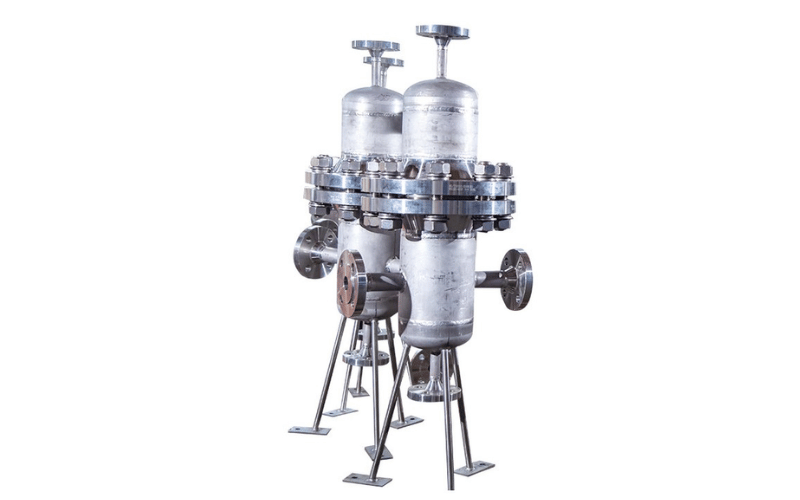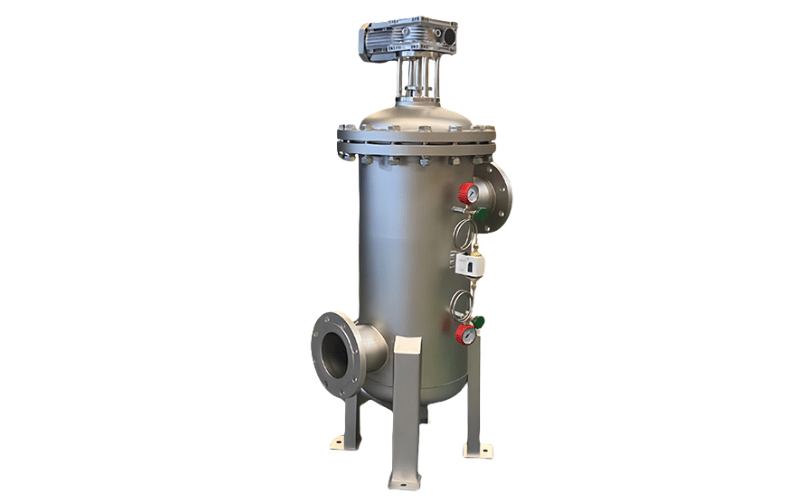Wastewater treatment plays a crucial role in maintaining environmental health and sustainability by removing contaminants and ensuring water is safe for reuse. Central to this process are filters, which act as essential components in purifying water and making it clean and reusable. This article explores the various types of filters used in wastewater treatment, their benefits, recent innovations in filtration technology, and provides practical tips for optimizing their use.
Table of Contents
ToggleUnderstanding Wastewater Treatment Filters
What Are Wastewater Treatment Filters and Why Are They Important?
Wastewater treatment filters are crucial tools in the water purification process, removing contaminants, solid particles, and impurities. These filters are specifically designed to handle the complex task of separating unwanted materials from water, ensuring they meet safety and environmental standards for reuse or discharge. By acting as a barrier, they play a critical role in protecting ecosystems, conserving water resources, and maintaining public health.
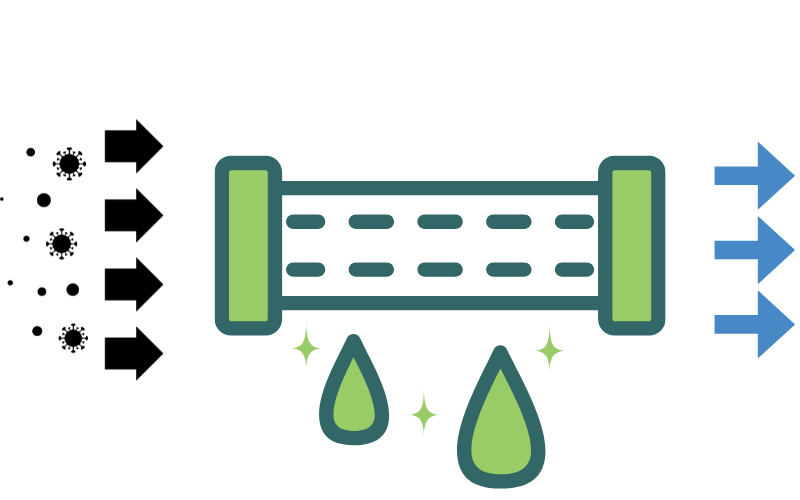
How Does the Filtration Process Work?
The filtration process in wastewater treatment involves passing water through a medium—such as sand, activated carbon, or specialized membranes—that traps impurities while allowing clean water to flow through. This process is highly effective in removing suspended solids, organic matter, and even microscopic pollutants. The significance of this process lies in its ability to enhance water quality, reduce the burden on other treatment stages, and ensure compliance with environmental regulations. By efficiently filtering out contaminants, these systems contribute to sustainable water management and resource conservation.
Exploring Different Types of Wastewater Treatment Filters
Sand Filters: A Traditional Yet Effective Solution
Sand filters are among the most established and widely utilized filtration technologies in water treatment, valued for their simplicity and effectiveness. These systems operate by channeling water through multiple layers of sand, where suspended solids, debris, and impurities are trapped within the granular medium. The filtration process relies on both physical straining and biological activity within the sand bed, making it a versatile solution for removing larger particles and reducing turbidity.
Sand filters are particularly favored in municipal and industrial water treatment plants due to their ability to handle high volumes of water efficiently. Their straightforward design and robust performance make them a dependable choice for pre-treatment processes, where initial contaminant removal is critical for protecting downstream systems.
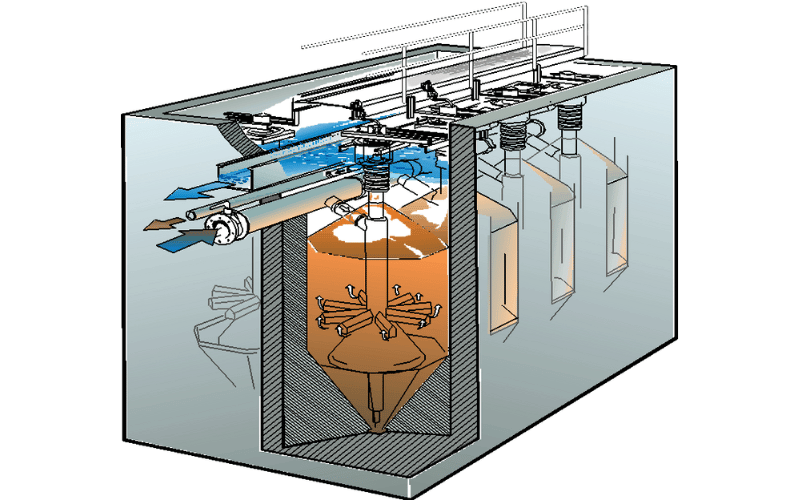
- Pros: Highly cost-effective, easy to operate, and requires minimal technical expertise. The low-maintenance design ensures long-term reliability with periodic backwashing.
- Cons: While effective for larger particles, sand filters are less capable of removing finer contaminants or dissolved impurities. Regular backwashing is necessary to maintain performance, which can increase water usage.
- Ideal Applications: Best suited for pre-treatment in large-scale water treatment facilities, irrigation systems, and applications where the primary goal is to reduce suspended solids and protect subsequent filtration stages.
Cartridge Filters: Compact and Versatile
Cartridge filters are highly versatile filtration systems designed to address a wide range of water treatment needs. These cylindrical units house replaceable filter elements, which are engineered to capture fine particles, sediment, and even some microorganisms. The filtration process typically involves water passing through the cartridge’s porous material, effectively removing impurities while maintaining a steady flow. Their compact design and straightforward operation make them an excellent choice for point-of-use systems and smaller-scale applications.
Cartridge filters are particularly valued for their precision in filtering finer contaminants, offering a higher level of water clarity compared to coarser filtration methods. Their modular nature allows for easy customization, enabling users to select cartridges with specific pore sizes or materials tailored to their unique requirements.
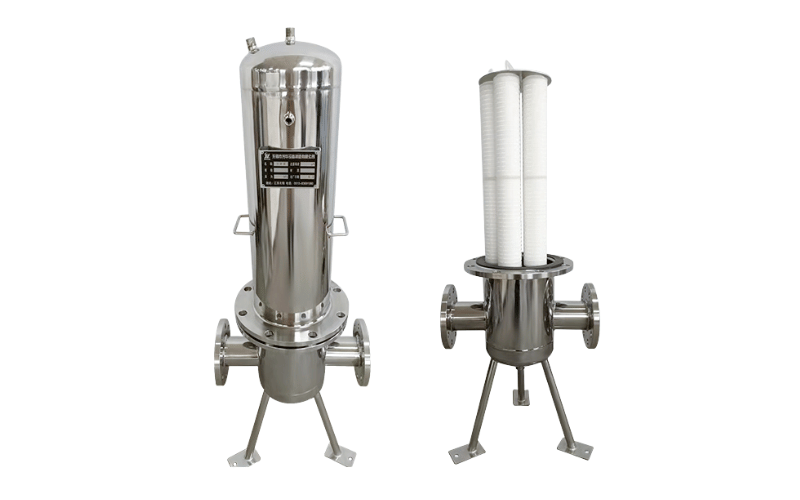
- Pros: Exceptionally easy to install and maintain, with a space-saving design that fits seamlessly into residential, laboratory, or small industrial setups. These filters excel at removing fine particles, providing a reliable solution for improving water quality.
- Cons: Limited capacity makes them less suitable for high-volume applications, and frequent cartridge replacements can increase operational costs over time. Proper disposal of used cartridges is also necessary to minimize environmental impact.
- Ideal Applications: Perfect for residential water filtration systems, laboratory environments requiring precise water quality, and small-scale industrial processes where compact, efficient filtration is essential.
Reverse Osmosis Filters: Advanced Purification Technology
Reverse osmosis (RO) filters represent one of the most advanced and effective water purification technologies available today. These systems utilize a semi-permeable membrane to separate dissolved salts, heavy metals, and a wide array of contaminants at the molecular level. By applying pressure to force water through the membrane, RO filters achieve an exceptional level of purity, making them indispensable in applications where water quality is critical.
This technology is particularly renowned for its ability to remove not only visible impurities but also dissolved solids, harmful chemicals, and even certain microorganisms. The result is water that meets the highest standards of purity, suitable for sensitive uses such as desalination, pharmaceutical production, and safe drinking water.
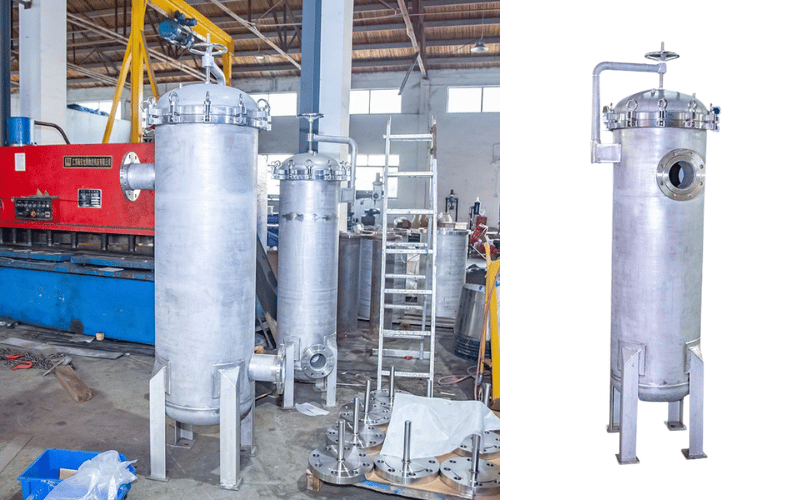
- Pros: Capable of eliminating a broad spectrum of contaminants, including dissolved salts, heavy metals, and volatile organic compounds (VOCs). Produces water of unmatched purity, making it ideal for demanding applications.
- Cons: RO systems require significant energy input to maintain the high-pressure process, leading to higher operational costs. The filtration rate is relatively slow, and the process generates a considerable amount of wastewater, which may require additional treatment or disposal.
- Ideal Applications: Best suited for desalination projects, pharmaceutical and electronics industries requiring ultrapure water, and residential or commercial drinking water systems where safety and quality are paramount.
Bag Filters: Efficient for Bulk Solids Removal
Bag filters are straightforward yet highly effective filtration systems designed to handle large volumes of water while efficiently capturing solid particles. These systems operate by directing water through a fabric bag, which acts as a barrier to trap debris, sediments, and other suspended solids. Their simplicity, combined with their ability to manage high flow rates, makes them a popular choice in industrial settings where bulk solid removal is a priority.
Bag filters are particularly valued for their versatility and cost-effectiveness, offering a reliable pre-filtration solution that protects downstream equipment and processes. The replaceable bag design allows for quick and easy maintenance, ensuring minimal disruption to operations.
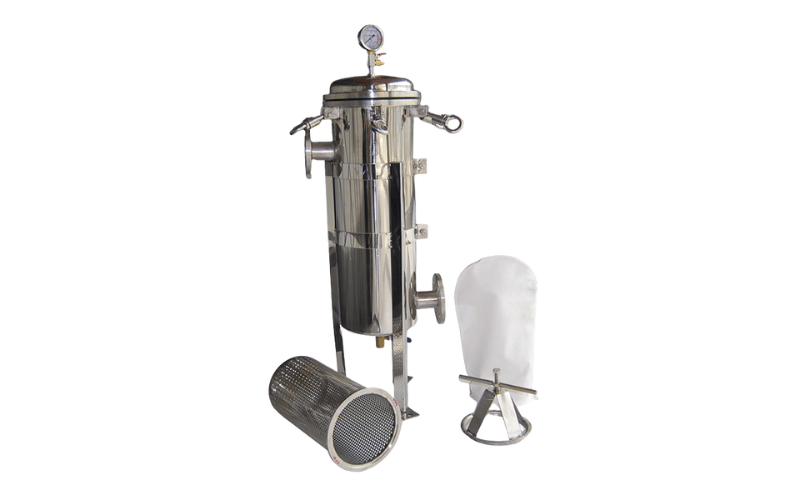
- Pros: Highly cost-effective and easy to operate, bag filters are ideal for applications that require high flow rates. The replaceable bags make maintenance straightforward, reducing downtime and operational complexity.
- Cons: While effective for larger particles, bag filters are not suitable for fine filtration or removing dissolved contaminants. Frequent bag replacements may be necessary, especially in systems with high levels of solids, which can increase maintenance efforts.
- Ideal Applications: Perfect for industrial wastewater treatment, where bulk solid removal is essential, and as a pre-filtration step in manufacturing processes to protect more advanced filtration systems or equipment downstream.
Membrane Filters: Ultrafiltration and Microfiltration
Membrane filters represent a sophisticated approach to water treatment, utilizing advanced separation technology to remove contaminants based on particle size. These systems are divided into two primary categories: ultrafiltration (UF) and microfiltration (MF). Ultrafiltration is designed to remove larger molecules, such as proteins and suspended solids, while microfiltration targets smaller particles, including bacteria and certain microorganisms. This dual capability makes membrane filters highly versatile and effective for achieving precise water quality standards.
The filtration process relies on semi-permeable membranes with specific pore sizes, allowing water to pass through while trapping unwanted impurities. Membrane filters are particularly valued for their ability to deliver high-purity water with minimal reliance on chemical additives, making them an environmentally friendly option for various industries.

- Pros: Membrane filters offer exceptional precision in removing contaminants, ensuring consistent water quality. Their operation requires minimal chemical usage, reducing environmental impact and making them ideal for applications where purity is critical.
- Cons: The initial setup and ongoing maintenance of membrane filtration systems can be costly. Additionally, membranes are prone to fouling, which can reduce efficiency and require regular cleaning or replacement to maintain performance.
- Ideal Applications: Widely used in the food and beverage industry for ensuring product safety and quality, in pharmaceutical production for ultrapure water, and in tertiary wastewater treatment to meet stringent discharge or reuse standards.
Multi-Media Filters: Enhanced Filtration Efficiency
Multi-media filters are advanced filtration systems designed to enhance efficiency and capacity by utilizing multiple layers of filtration media. These layers typically include materials such as sand, gravel, and anthracite, each with varying densities and particle sizes. This strategic layering allows the filter to capture a wide range of impurities, from larger suspended solids to finer particles, in a single pass. The result is a highly effective and durable filtration solution capable of handling high flow rates and diverse water treatment needs.
The design of multi-media filters ensures that water flows through progressively finer layers, maximizing contaminant removal while minimizing clogging. This makes them an excellent choice for applications requiring consistent performance and reliability over extended periods.
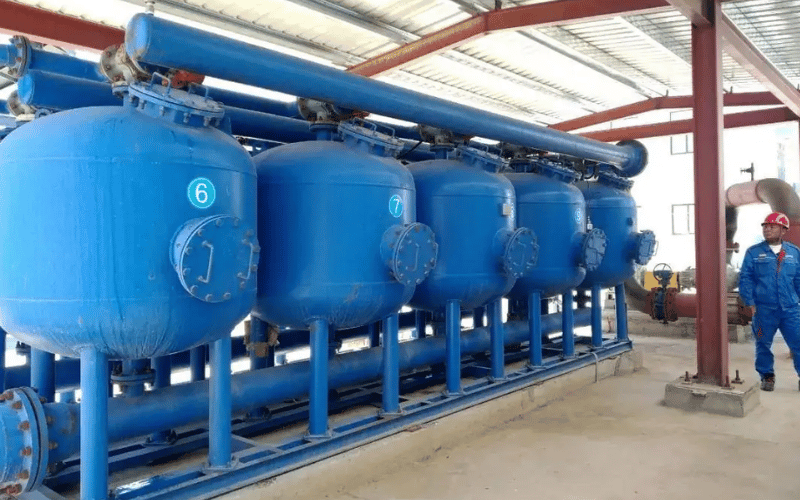
- Pros: Multi-media filters are highly effective at removing particles of varying sizes, making them versatile for different water treatment scenarios. They are capable of managing high flow rates and are built to last, offering long-term performance with proper maintenance.
- Cons: These systems require regular backwashing to maintain efficiency, which can increase water usage. Additionally, the initial investment for multi-media filters is higher compared to simpler filtration systems, though the long-term benefits often outweigh the costs.
- Ideal Applications: Perfect for municipal water treatment plants where large volumes of water need to be processed efficiently, and in industrial cooling systems where clean water is essential for maintaining equipment performance and longevity.
Activated Carbon Filters: Removing Odors and Chemicals
Activated carbon filters are a highly effective solution for removing unwanted chemicals, odors, and organic compounds from water. These filters utilize activated carbon, a material with an exceptionally porous structure that adsorbs impurities as water passes through. This process not only eliminates chlorine and volatile organic compounds (VOCs) but also significantly enhances the taste, smell, and overall quality of the water.
Activated carbon filters are particularly valued for their ability to improve water aesthetics, making them a popular choice in both residential and industrial applications. Their versatility and efficiency in addressing chemical contaminants make them indispensable for systems where water clarity and taste are critical.
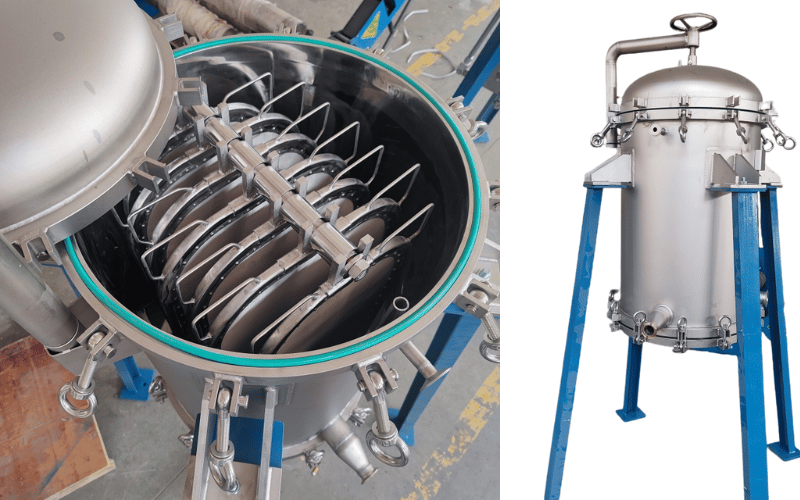
- Pros: These filters excel at removing a wide range of chemicals, including chlorine and VOCs, while also eliminating unpleasant odors. They are highly effective in improving the aesthetic qualities of water, such as taste and clarity, making them ideal for drinking water systems.
- Cons: Activated carbon filters have a limited lifespan, as the adsorption capacity of the carbon becomes saturated over time, requiring regular replacement. Additionally, they are not effective for removing dissolved solids or heavy metals, which may require supplementary filtration methods.
- Ideal Applications: Perfect for residential drinking water systems to ensure clean and great-tasting water, aquariums where water quality is essential for aquatic life, and industrial processes that require adequate odor and chemical control.
Trickling Filters: Biological Treatment in Action
Trickling filters are a time-tested and eco-friendly solution for biological wastewater treatment, leveraging natural microbial activity to break down organic matter. These systems consist of a bed of porous materials, such as rocks, gravel, or specially designed plastic media, which provide a large surface area for microorganisms to thrive. As wastewater is distributed over the filter bed, it trickles down through the media, allowing the organisms to metabolize and degrade organic pollutants effectively.
This method is particularly valued for its simplicity and low energy requirements, making it a sustainable choice for treating wastewater in both municipal and small-scale applications. Trickling filters are designed to handle moderate organic loads, offering a reliable and cost-effective solution for biological treatment.
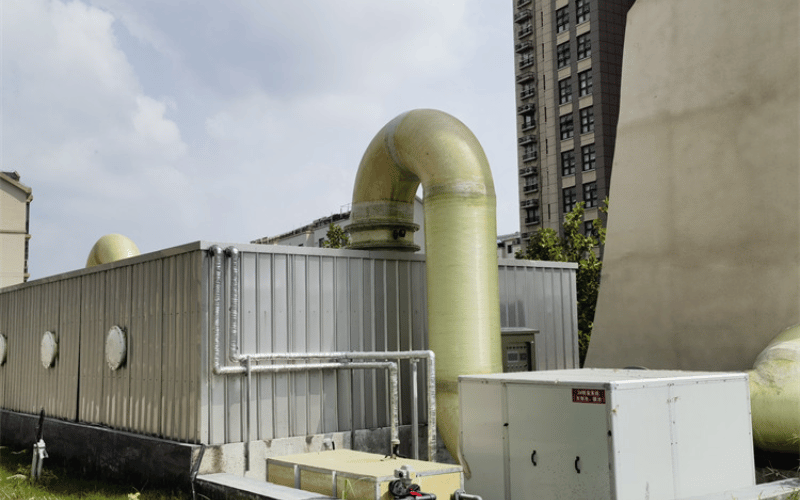
- Pros: Trickling filters are highly energy-efficient, relying on natural processes rather than mechanical aeration. They are effective at reducing organic matter and are relatively simple to operate and maintain, making them a practical choice for long-term use.
- Cons: These systems require a significant amount of space due to the size of the filter bed, which can be a limitation in urban or space-constrained areas. Additionally, they are less effective for treating high-strength wastewater with elevated levels of organic pollutants, which may require supplementary treatment methods.
- Ideal Applications: Well-suited for municipal wastewater treatment plants where biological treatment is essential, as well as small-scale systems in rural or decentralized locations that prioritize low-energy, sustainable solutions.
How Wastewater Filtration Works: A Step-by-Step Guide
Step 1: Pre-Treatment to Remove Large Debris
The filtration process begins with pre-treatment, where large debris such as leaves, plastics, and other solid waste is removed. This step often involves screens or grit chambers to prevent clogging in subsequent filtration stages. Pre-treatment ensures the system operates efficiently and extends the lifespan of the filters.
Step 2: Primary Filtration for Suspended Solids
Once pre-treatment is complete, the water moves to the primary filtration stage. Here, filters like sand or multi-media systems trap suspended solids and larger particles. This step significantly reduces turbidity, preparing the water for more advanced filtration processes.
Step 3: Secondary Filtration for Finer Contaminants
In the secondary stage, finer filters such as cartridge or membrane systems are employed to remove smaller particles, microorganisms, and some dissolved impurities. This step enhances water clarity and quality, making it suitable for further treatment or reuse.
Step 4: Advanced Filtration for Specific Contaminants
For applications requiring high-purity water, advanced filtration methods like reverse osmosis or activated carbon filters are used. These systems target specific contaminants, such as dissolved salts, heavy metals, or organic compounds, ensuring the water meets stringent quality standards.
Step 5: Post-Treatment and Disinfection
The final step involves post-treatment, where the filtered water is disinfected using methods like UV light or chlorination. This ensures the water is free from harmful pathogens and safe for its intended use, whether for industrial processes, irrigation, or discharge into natural water bodies.
Choosing the Right Filtration System for Your Needs
Understanding the Type of Wastewater
The first step in selecting an appropriate filtration system is identifying the type of wastewater you need to treat. Industrial wastewater often contains heavy metals, oils, and chemicals, requiring advanced systems like reverse osmosis or activated carbon filters. Residential wastewater, on the other hand, typically involves organic matter and suspended solids, making sand or cartridge filters a more practical choice. Matching the filter type to the specific contaminants in your water ensures effective treatment and optimal performance.
Determining the Desired Level of Purity
The level of water purity required depends on its intended use. For applications like drinking water or pharmaceutical production, high-purity systems such as membrane filters or reverse osmosis are essential. For irrigation or industrial cooling, less intensive filtration methods like bag or multi-media filters may suffice. Clearly defining your water quality goals will help narrow down the options and avoid over-investing in unnecessary technology.
Balancing Budget and Maintenance Needs
Cost considerations play a significant role in filter selection. While advanced systems like reverse osmosis offer superior performance, they come with higher upfront costs and ongoing maintenance requirements. Simpler options like sand or bag filters are more affordable but may require frequent cleaning or replacement. Evaluating your budget alongside the long-term maintenance demands of each system will help you make a cost-effective decision.
Quick Reference: Filter Comparison Table
| Filter Type | Best For | Cost | Maintenance | Purity Level |
|---|---|---|---|---|
|
Sand Filters |
Large particles, pre-treatment |
Low |
Low (periodic backwash) |
Moderate |
|
Cartridge Filters |
Fine particles, residential use |
Moderate |
High (frequent changes) |
High |
|
Reverse Osmosis Filters |
Dissolved solids, high-purity needs |
High |
Moderate (membrane care) |
Very High |
|
Bag Filters |
Bulk solids, industrial use |
Low |
Moderate (bag changes) |
Moderate |
|
Membrane Filters |
Microorganisms, fine contaminants |
High |
High (fouling prevention) |
Very High |
|
Multi-Media Filters |
Versatile, large-scale applications |
Moderate |
Low (backwashing) |
High |
|
Activated Carbon Filters |
Odors, chemicals, taste improvement |
Moderate |
Moderate (media changes) |
High |
This table provides a snapshot of the strengths, costs, and maintenance requirements of various filtration systems, helping you make an informed choice tailored to your specific needs.
Innovations in Wastewater Filtration Technology
Self-Cleaning Filters: Advanced Technology for Continuous and Efficient Filtration
Self-cleaning filters are a cutting-edge innovation in water treatment, designed to streamline operations by automatically removing accumulated debris from the filter surface. Unlike traditional filters that require frequent manual cleaning or replacement, these systems utilize advanced mechanisms such as backflushing, rotating brushes, or suction scanning to clean themselves without halting the filtration process. This ensures consistent performance, reduces maintenance demands, and minimizes operational downtime, making them an invaluable asset in high-demand environments.
These filters are engineered for efficiency, maintaining uninterrupted water flow even during cleaning cycles. Their automated functionality not only enhances productivity but also contributes to cost savings by reducing labor requirements and extending the lifespan of the filtration system. Additionally, self-cleaning filters are designed with sustainability in mind, using minimal water during cleaning to lower environmental impact.
- Efficiency: Self-cleaning filters operate continuously, ensuring a steady and reliable water flow without interruptions, even during cleaning cycles.
- Cost-Effectiveness: By automating the cleaning process, these filters significantly reduce labor costs and maintenance efforts while prolonging the life of the filtration system.
- Environmental Impact: Designed to minimize water wastage during cleaning, self-cleaning filters are an eco-friendly choice for industries prioritizing sustainability.
Ideal Applications: Self-cleaning filters are particularly well-suited for industrial applications that require the efficient processing of large volumes of water with minimal downtime. They are commonly used in sectors such as manufacturing, power generation, and irrigation systems, where consistent performance and reduced maintenance are critical.
Advanced Membrane Systems: Cutting-Edge Technology for Unmatched Filtration Precision
Advanced membrane systems, incorporating groundbreaking technologies like nanofiltration (NF) and forward osmosis (FO), have set a new standard in water treatment by delivering unparalleled precision in contaminant removal. These systems utilize highly specialized membranes designed to filter out even the smallest impurities, including viruses, bacteria, dissolved salts, and other microscopic particles. By leveraging innovative designs and materials, advanced membrane systems achieve exceptional filtration performance while consuming significantly less energy compared to traditional methods, making them both efficient and sustainable.
These systems are particularly valued for their ability to produce ultrapure water, a critical requirement in industries where water quality directly impacts product integrity and safety. Their energy-efficient operation and reduced reliance on chemical additives not only lower operational costs but also align with environmentally conscious practices, making them a forward-thinking solution for modern water treatment challenges.
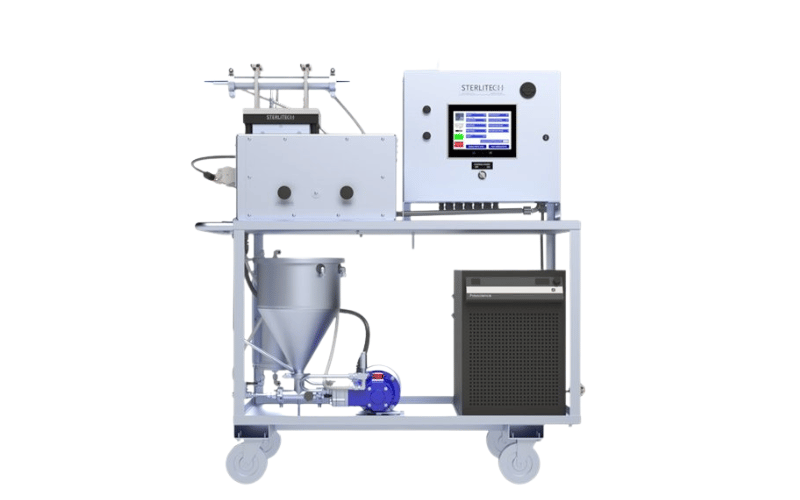
- Efficiency: Advanced membrane systems deliver consistently high-purity water while operating with minimal energy consumption, making them ideal for applications where precision and reliability are paramount.
- Cost-Effectiveness: By reducing energy usage and minimizing the need for chemical additives, these systems help lower operational costs over time, offering a sustainable and economical solution.
- Environmental Impact: With their focus on energy efficiency and reduced chemical discharge, advanced membrane systems support sustainable water treatment practices, contributing to a greener future.
Ideal Applications: These systems are indispensable in industries requiring ultrapure water, such as pharmaceuticals, electronics manufacturing, and power generation. They are also increasingly used in desalination and wastewater reuse projects, where their ability to deliver high-quality water with minimal environmental impact is highly valued.
Smart Filtration Systems: Revolutionizing Water Treatment with IoT Technology
Smart filtration systems represent the next generation of water treatment, combining advanced filtration techniques with the power of IoT (Internet of Things) technology. These systems are equipped with intelligent sensors that continuously monitor key parameters such as flow rate, pressure, and contaminant levels. By providing real-time data and actionable insights, smart filtration systems enable operators to optimize performance, detect potential issues early, and make data-driven decisions to enhance efficiency and reduce waste.
The integration of IoT technology not only improves the precision and reliability of filtration processes but also minimizes downtime and operational costs. These systems are designed to adapt dynamically to changing conditions, ensuring consistent water quality while conserving resources. Their ability to automate and streamline operations makes them an invaluable asset for large-scale and high-demand applications.

- Efficiency: Real-time monitoring and automated adjustments ensure optimal system performance, reducing the risk of inefficiencies or failures. Early detection of issues allows for proactive maintenance, minimizing disruptions.
- Cost-Effectiveness: By preventing costly repairs, reducing energy consumption, and extending the lifespan of filtration components, smart systems deliver significant long-term savings.
- Environmental Impact: Smart filtration systems promote sustainability by optimizing water and energy usage, reducing waste, and supporting resource conservation efforts.
Ideal Applications: These systems are particularly advantageous for large-scale industrial and municipal operations where precision, efficiency, and reliability are critical. They are also well-suited for facilities aiming to adopt sustainable practices and leverage advanced technology for smarter water management.
Hybrid Filtration Technologies: Combining Strengths for Superior Results
Hybrid filtration technologies represent a groundbreaking approach to water treatment, combining the strengths of multiple filtration methods into a single, cohesive system. By integrating techniques such as activated carbon with ultrafiltration, or reverse osmosis with UV disinfection, these systems are capable of addressing a wide spectrum of contaminants, from dissolved solids and organic compounds to microorganisms and harmful pathogens. This multi-layered approach ensures superior water quality while enhancing the overall efficiency and reliability of the treatment process.
The versatility of hybrid systems allows them to tackle complex water purification challenges that would otherwise require multiple standalone systems. By streamlining operations and consolidating technologies, hybrid filtration systems not only improve performance but also reduce operational costs and environmental impact, making them an ideal solution for both municipal and industrial applications.
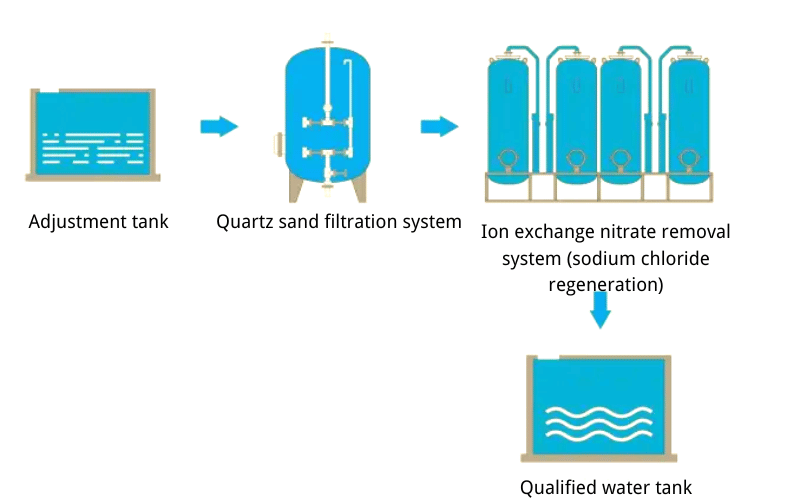
- Efficiency: Hybrid systems are designed to handle diverse impurities, offering a comprehensive solution for water treatment. By combining complementary technologies, they ensure optimal performance and consistent water quality.
- Cost-Effectiveness: By integrating multiple filtration methods into a single system, hybrid technologies eliminate the need for separate standalone units, reducing installation, maintenance, and operational costs.
- Environmental Impact: These systems are engineered to minimize chemical usage and energy consumption, promoting sustainable water treatment practices while reducing the environmental footprint.
Ideal Applications: Hybrid filtration technologies are particularly well-suited for municipal water treatment plants, where they can address a wide range of contaminants to meet stringent water quality standards. They are also increasingly popular in industries with complex water purification needs, such as pharmaceuticals, food and beverage production, and power generation, where precision and efficiency are critical. By combining the best of multiple filtration methods, hybrid systems deliver superior results for even the most demanding applications.
Key Benefits of Wastewater Filtration
Environmental Advantages: Protecting Ecosystems and Conserving Resources
One of the most significant benefits of wastewater filtration is its positive impact on the environment. By effectively removing pollutants and contaminants, filtration systems prevent harmful substances from entering natural water bodies, protecting aquatic ecosystems and biodiversity. Additionally, these systems enable the reuse of treated water, reducing the strain on freshwater resources and promoting sustainable water management practices.
- Reducing Pollution: Filters trap harmful chemicals, heavy metals, and organic waste, preventing them from contaminating rivers, lakes, and oceans.
- Conserving Water: Treated wastewater can be reused for irrigation, industrial processes, or even potable water in some cases, significantly reducing the demand for freshwater extraction.
Economic Benefits: Lower Costs Through Water Reuse
Wastewater filtration systems offer substantial economic advantages by enabling the reuse of treated water, which reduces the need for expensive freshwater supplies. Industries and municipalities can save on water procurement costs while also lowering expenses related to wastewater disposal and environmental compliance.
- Cost Savings: Reusing treated water for non-potable applications, such as cooling systems or agricultural irrigation, reduces operational costs.
- Regulatory Compliance: Meeting environmental standards through effective filtration minimizes the risk of fines and penalties, further enhancing cost efficiency.
Health Benefits: Ensuring Safe and Clean Water
Filtration systems play a critical role in safeguarding public health by removing harmful contaminants, including bacteria, viruses, and toxic chemicals, from wastewater. This ensures that treated water is safe for reuse or discharge, reducing the risk of waterborne diseases and exposure to hazardous substances.
- Eliminating Pathogens: Advanced filtration methods, such as membrane systems and UV disinfection, effectively neutralize harmful microorganisms.
- Improving Water Quality: By removing pollutants and impurities, filtration systems ensure that water is safe for human contact and consumption in appropriate applications.
These combined benefits make wastewater filtration an essential component of sustainable water management, contributing to environmental protection, economic efficiency, and public health.
Common Challenges in Wastewater Filtration and How to Solve Them
Clogging: A Frequent Obstacle in Filtration Systems
Clogging occurs when accumulated debris and particles obstruct the flow of water through the filter, reducing efficiency and increasing operational downtime. This issue is particularly common in systems handling high volumes of wastewater with significant solid content.
- Solution: Regularly inspect and clean filters to prevent excessive buildup. Implement pre-treatment steps, such as using screens or grit chambers, to remove larger debris before filtration. For advanced systems, consider self-cleaning filters that automatically clear blockages without manual intervention.
Maintenance Demands: Balancing Performance and Upkeep
Filtration systems often require consistent maintenance to ensure optimal performance. Tasks like replacing filter media, cleaning components, and monitoring system efficiency can be time-consuming and costly if not managed effectively.
- Solution: Develop a maintenance schedule tailored to the specific filter type and application. Use smart filtration systems equipped with sensors to monitor performance in real time, allowing for predictive maintenance and reducing unexpected downtime. Training staff on proper maintenance techniques can also improve system longevity.
Limited Filter Lifespan: Maximizing Durability and Efficiency
The lifespan of a filter depends on factors such as the type of filter, the quality of wastewater, and the frequency of use. Over time, filters may degrade or lose efficiency, leading to higher replacement costs and reduced performance.
- Solution: Choose filters made from durable materials suited to the specific contaminants in your wastewater. For example, membrane filters with anti-fouling coatings can last longer in challenging environments. Regularly backwash or replace filter media as recommended by the manufacturer to maintain efficiency and extend the system’s lifespan.
Practical Tips for Overcoming Filtration Challenges
- Optimize Pre-Treatment: Removing large debris and sediments before filtration reduces the strain on the system and minimizes clogging.
- Monitor System Performance: Use IoT-enabled sensors to track flow rates, pressure, and contaminant levels, ensuring timely maintenance and adjustments.
- Invest in Quality Filters: High-quality filters may have a higher upfront cost but often provide better durability and performance, reducing long-term expenses.
- Implement Redundancy: Having backup filters or parallel systems ensures continuous operation during maintenance or unexpected failures.
By addressing these common challenges with proactive strategies, wastewater filtration systems can operate more efficiently, reducing costs and ensuring reliable performance over time.
Real-World Applications and Success Stories in Wastewater Filtration
Industrial Success: Advanced Filtration in the Food and Beverage Sector
A leading beverage manufacturer implemented a combination of reverse osmosis and activated carbon filters to treat its wastewater. The system effectively removed organic compounds, dissolved salts, and odors, allowing the company to reuse the treated water for cleaning and cooling processes. This not only reduced the facility’s freshwater consumption by 40% but also helped the company meet stringent environmental regulations.
- Key Takeaway: Industries with high water usage can achieve significant cost savings and environmental compliance by adopting advanced filtration technologies tailored to their specific needs.
Municipal Achievement: Multi-Media Filters in Urban Wastewater Management
A metropolitan city in Southeast Asia faced challenges with treating wastewater from its growing population. By installing multi-media filtration systems in its treatment plants, the city was able to efficiently remove suspended solids and improve water clarity. The treated water was then reused for landscaping and non-potable applications, reducing the demand for freshwater resources.
- Key Takeaway: Multi-media filters are highly effective for large-scale municipal projects, offering a sustainable solution for urban water management.
Agricultural Impact: Sand Filters for Irrigation Water Reuse
A farming community in a drought-prone region adopted sand filtration systems to treat wastewater for irrigation. The filters removed sediments and organic matter, ensuring the water was safe for crops while conserving limited freshwater supplies. This initiative not only improved agricultural productivity but also supported the community’s long-term water sustainability goals.
- Key Takeaway: Sand filters provide a cost-effective and reliable solution for agricultural applications, especially in areas with limited water availability.
Pharmaceutical Industry: Membrane Filtration for High-Purity Water
A pharmaceutical company required ultrapure water for its production processes. By integrating ultrafiltration and reverse osmosis systems, the company achieved the necessary water quality standards while minimizing chemical usage. The advanced filtration setup also reduced wastewater discharge, aligning with the company’s sustainability objectives.
- Key Takeaway: Membrane filtration systems are ideal for industries requiring high-purity water, offering both efficiency and environmental benefits.
Community Initiative: Activated Carbon Filters for Safe Drinking Water
A rural community in Africa faced challenges with access to clean drinking water due to contamination from industrial runoff. A non-profit organization installed activated carbon filtration units in the area, which successfully removed harmful chemicals and improved the taste and odor of the water. This project significantly reduced waterborne illnesses and improved the overall quality of life for residents.
- Key Takeaway: Activated carbon filters are a practical and impactful solution for providing safe drinking water in underserved communities.
FAQs About Wastewater Treatment Filters
How Often Should Filters Be Replaced?
The replacement frequency of filters depends on the type of filter, the volume of water being treated, and the level of contaminants present. For example, cartridge filters typically need replacement every 3-6 months, while sand filters can last several years with regular backwashing. Monitoring system performance, such as reduced flow rates or increased pressure, can help determine when a filter needs to be replaced.
- Tip: Follow the manufacturer’s guidelines and conduct routine inspections to ensure optimal performance and longevity.
Can Filters Remove Viruses?
Yes, certain advanced filtration systems, such as ultrafiltration and reverse osmosis, are capable of removing viruses. These filters use membranes with extremely small pore sizes that can trap even microscopic pathogens. However, for complete disinfection, filtration is often combined with additional treatments like UV light or chemical disinfection to ensure all viruses are neutralized.
- Tip: For applications requiring virus removal, choose systems specifically designed for microbial filtration.
Are Wastewater Filters Expensive to Maintain?
The cost of maintaining wastewater filters varies based on the type of system and its usage. Simpler systems like sand or bag filters have lower maintenance costs but may require frequent cleaning or replacement. Advanced systems like reverse osmosis or membrane filters have higher upfront and maintenance costs but offer superior performance and durability.
- Tip: Investing in high-quality filters and implementing a regular maintenance schedule can reduce long-term expenses.
What Types of Contaminants Can Filters Remove?
Filters are designed to target specific contaminants, depending on their type. For instance:
- Sand Filters: Remove large particles and suspended solids.
- Activated Carbon Filters: Eliminate odors, chlorine, and organic compounds.
- Membrane Filters: Trap fine particles, bacteria, and dissolved salts.
Understanding the composition of your wastewater is crucial for selecting the right filter.
Can Filters Be Used for Reusing Wastewater?
Yes, many filtration systems are designed to treat wastewater for reuse in applications like irrigation, industrial processes, or even potable water in some cases. Multi-stage systems combining pre-treatment, filtration, and disinfection are particularly effective for producing high-quality reusable water.
- Tip: Ensure the filtration system meets the required water quality standards for its intended reuse application.
How Do I Prevent Clogging in Filters?
Clogging is a common issue in filtration systems, especially when treating water with high levels of solids. Pre-treatment steps, such as using screens or sedimentation tanks, can help reduce the load on filters. Additionally, self-cleaning filters or regular backwashing can minimize blockages and maintain efficiency.
- Tip: Monitor the system regularly and address clogging early to avoid operational disruptions.
Are There Eco-Friendly Filtration Options?
Yes, many modern filtration systems are designed with sustainability in mind. For example, self-cleaning filters reduce water wastage during maintenance, and advanced membrane systems consume less energy compared to older technologies. Additionally, reusing treated wastewater reduces the demand for freshwater resources, contributing to environmental conservation.
- Tip: Look for energy-efficient systems and those with minimal chemical usage to align with eco-friendly goals.
Conclusion
Wastewater treatment filters play a vital role in protecting the environment, conserving water resources, and ensuring public health by effectively removing contaminants and improving water quality. By understanding the various filtration options and their applications, individuals and industries can make informed decisions to address their specific needs. Take the next step by consulting experts and investing in the right filtration system to contribute to a sustainable and healthier future.


